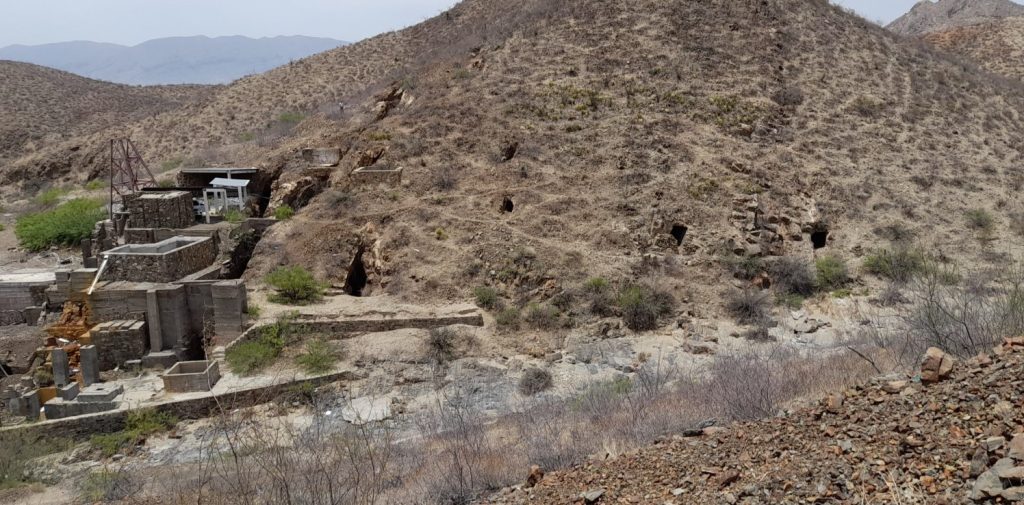Quetzal Copper samples 2.4% copper over 3.8 metres at Cristinas, Mexico

Quetzal Copper Corp. [TSXV-Q] reported results of the due diligence surface rock sampling campaign and geophysical survey at the Cristinas project, Chihuahua, Mexico.
Matthew Badiali, CEO, said: “The Cristinas project is a huge opportunity for Quetzal to deliver immediate value to our shareholders. It has the key features of high copper grades and size potential demonstrated by the electromagnetic geophysical survey. Like our Princeton project in British Columbia, the Cristinas project highlights Quetzal’s ability to acquire projects that far exceed the quality we see in many junior copper exploration companies. We are excited for the company’s maiden drill program at Cristinas to commence next month.”
As part of the due diligence of the Cristinas project, the company collected 18 rock chip samples across prospective target areas around the historic Cristinas mine. The mine operated at a small scale down to 50 metres below surface in the 1950s.
The due diligence surface rock sampling results of 18 samples returned values ranging from less than 0.1 to 7% copper, mainly in copper oxides. Only four of the 18 samples returned less than 1 per cent copper. The highest grade of 7% copper came from a narrow vein located 1,550 metres northwest of the historic Cristinas mine workings. Refer to original press release for complete assays.
The team only found one vein with enough exposure to collect multiple samples across its width. It was in the historical mine area. The sampling resulted in a 3.8-metre true width (TW, based on mapped geometry of the vein) grading 2.42% copper and 162 g/t silver.
Another notable aspect of the sampling program are areas of significant cobalt grades. The cobalt appears to correlate with the high copper grades in some areas. Cobalt has the potential, with silver, to contribute to the economic value of mineralization at Cristinas.
Results from a fixed-loop electromagnetic (EM) survey completed in 2022 have proven particularly encouraging at Cristinas, delineating significant anomalies extending down dip from known mineralization.
The EM survey was completed in two parts over the area of historical (2014) drilling, which targeted two structures known as the Coatl and Hatz veins. These holes intersected increasing grades and thicknesses of copper mineralization with depth down to 80 metres below surface, where they remain open. The two deepest holes are LC14DD09, which returned 4.3 metres true width grading 3.2% copper, and hole LC14DD10, which returned 3.7 metres true width of 3% copper.
The survey revealed a conductor that aligns with the down-dip projection of the shallow drill intercepts and continues to depth of at least 350 metres below surface. The company interprets the conductor to be related to sulphide (such as chalcopyrite and/or pyrite) mineralization like that observed in the drill holes, which underlies the oxidized mineralization sampled at surface. This makes stepping deeper at Cristinas an excellent drill target.
In addition, the survey identified a second conductor that has the same vertical extent as the Coatl vein conductor. However, it is located approximately 90 metres into the hangingwall. Drill intercepts located at the top of the historic holes coincide with the upward projection of this conductor and include 0.9 metres true width of 2% copper in hole LC13DD07.
The survey also demonstrated two additional strong conductor targets farther south of the Cristinas mine area that require additional field follow-up.
The scope of the survey limited the depth and strike extent of all the EM conductors, including the Coatl and Hatz vein conductors. The company plans to refine the geophysical targets next month by collecting additional EM data. For comparison, the mineralization at the nearby Plomosas mine, owned by Impact Silver, extends 900 metres down dip. This supports the significant depth potential for carbonate replacement mineralization in the region.
Quetzal is preparing a drill program at the Cristinas project to evaluate these compelling targets, which is to commence in May. The company is planning a 1,500 to 3,000-metre initial drill program which will include down-hole EM surveying to refine geophysical targets. Quetzal Copper will provide additional details as preparation advances.
The 685-hectare Cristinas project is in northeastern Chihuahua state, Mexico, approximately two hours by car from Chihuahua City. The Cristinas project includes a historic copper mine that operated in the 1950s on shallow copper oxide mineralization.
The project features a greater than 1,250 metre long zone of copper mineralization traced through rock chips on surface and 12 historical (2014) drill holes. The copper mineralization is open along strike and at depth with significant expansion potential highlighted by limited geophysical surveys. Drilling results include intercepts of 4.3 metres true width grading 3.2% copper and 3.7 metres true width of 3% copper. The deepest holes penetrated only 80 metres below the surface.
Quetzal has a portfolio of three properties in British Columbia, Canada, and one property in Chihuahua, Mexico. The company’s principal project, Princeton Copper, is located adjacent to Hudbay’s Copper Mountain mine in southern British Columbia.
